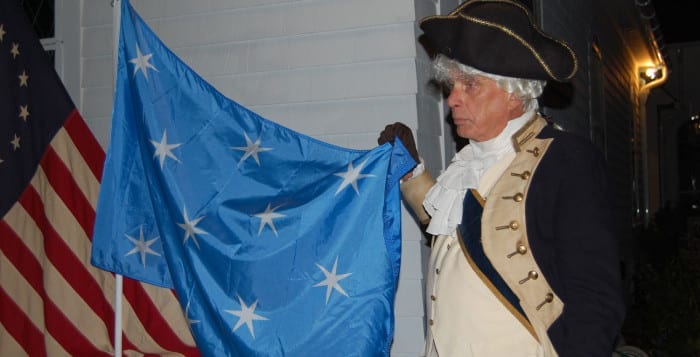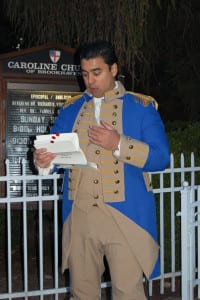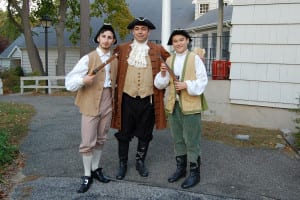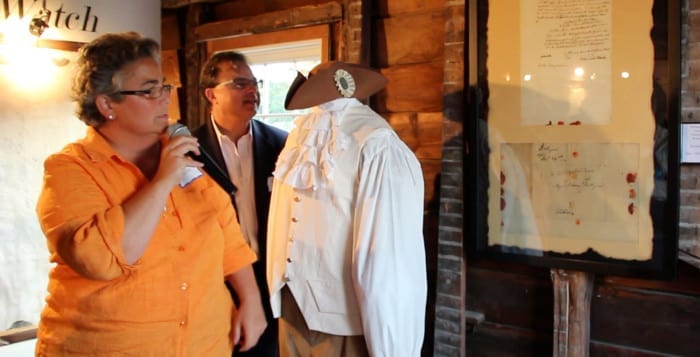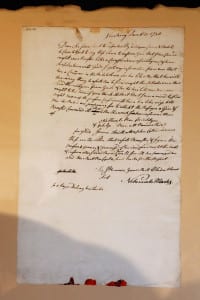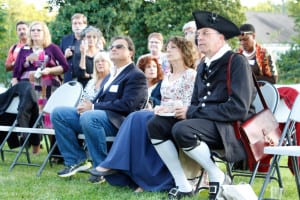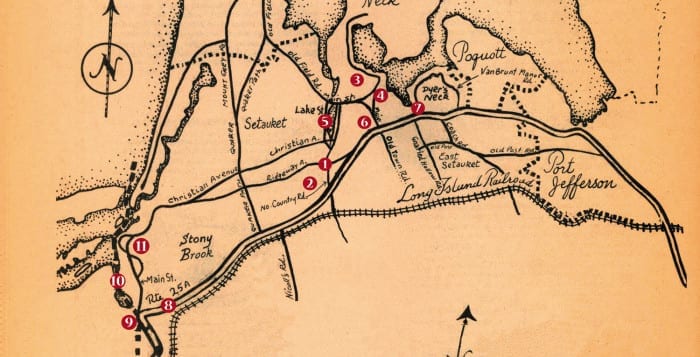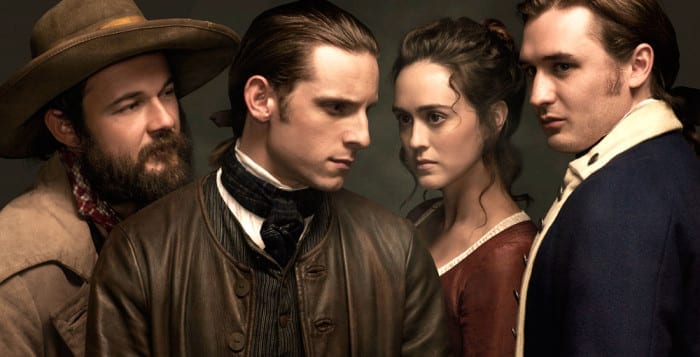By Michael Tessler
“I only regret that I have but one life to give for my country” are the immortal words (supposedly) spoken by American hero and spy Nathan Hale. After he was hung by the British in 1776 for treason and espionage, his words of resilience and patriotism inspired our young nation.
No one was inspired more than his best friend, Yale classmate and Setauket local — Benjamin Tallmadge. This well-educated student turned Continental soldier used the death of his friend to inspire the creation of a secret spy ring that played an important role in the American Revolution and helped bring the British Empire to its knees.
In conjunction with the I LOVE NY Path Through History weekend, the Ward Melville Heritage Organization’s Youth Corps Theater Troupe will present a theatrical performance on Saturday, June 18, showing the creation of the Culper Spy Ring in, fittingly, the oldest standing home in the Town of Brookhaven, the Brewster House, circa 1665, in Setauket which was home to six generations of Brewsters.
According to the WMHO’s website, Joseph Brewster operated the house as a tavern and general store during the American Revolution, entertaining British troops. American Patriot Caleb Brewster, cousin of Joseph Brewster and presumably a frequent visitor to the house, was a member of George Washington’s Culper Spy Ring.
Deborah Bourdeau, the coordinator of the project, has been helping this wonderful company of young teens in their production of “To Spy or Not to Spy: That Is the Question!” originally written in 2012 by Professor Lauren Kaushansky of Stony Brook University.
Though the title sounds simple enough, the premise is both fascinating and enlightening. The production explores the annals of local lore while delving into the moral dilemmas of the time. Simply put: How does one abandon one’s country, while assuming the role of traitor and secret agent? This internal dialogue comes to life in a well-paced theatrical skit that resurrects some of our greatest local heroes: Benjamin Tallmadge (Amanda Dagnelli), Abraham Woodhull (Suraj Singh), Anna Smith Strong (Leah Cussen), Austin Roe (Aleena Siddiqui), Caleb Brewster (Ethan Winters) and Joseph Brewster (Emily Wicks).
Though the actors are young, they bring incredible talent to this living history stage show. Emily Wicks, a member of the Ward Melville Heritage Organization Youth Corps, had the great idea of bringing the show from its original stage at the Educational & Cultural Center in Stony Brook Village to the historic Brewster House. This venue adds a wonderful depth to the show, as the home and tavern have been returned to their former glory. Their setup is unique (unintentionally inspired by the Tony-winning production “Fun Home”) in that you’re looking in rather than at. It makes for a very special viewing experience.
What’s so inspiring about this production is that it’s almost entirely led by youth. Young people coming together to tell an important and often forgotten part of our national story and local history. There’s a maturity well beyond their years that left me feeling both prideful and impressed. It’s a show you won’t want to miss and a story that needs to be heard.
Performances of “To Spy or Not to Spy: That Is the Question!” will be held in the Brewster House, 18 Runs Road, Setauket, on June 18 at 1 p.m. and again at 2:30 p.m. Tickets are $4 adults, $2 children under 12. Promptly after the show, teen tour guides will provide free tours of the Brewster House. For reservations, call 631-751-2244 or visit www.wmho.org.
The Ward Melville Heritage Organization’s Youth Corps, based in Stony Brook, is a volunteer group for youth ages 11 to 17 who participate in stewardship projects in historic and environmental preservation. For more information on how to join or help visit them at: wmho.org/youth-corps.


